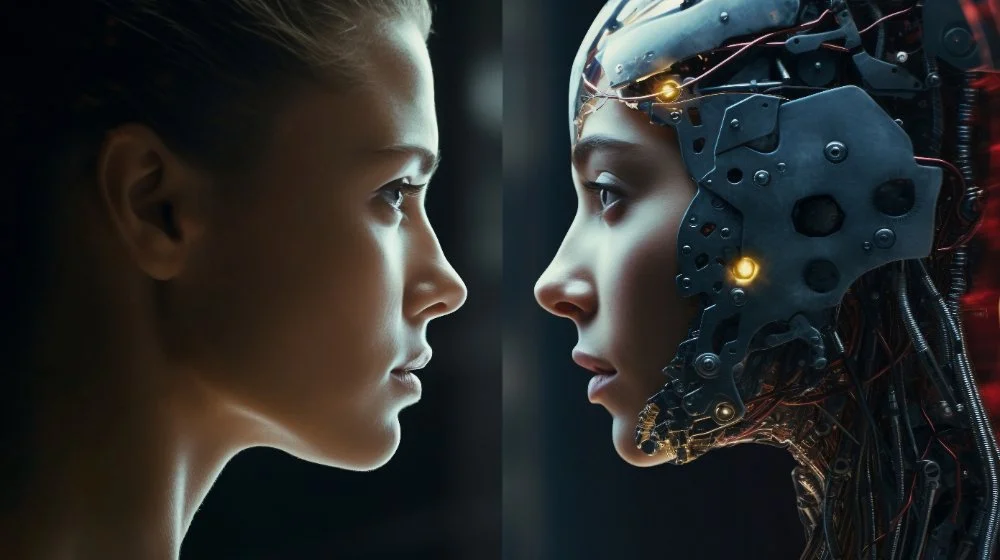AI vs. Humans: Who Wins the Marketing Challenge?
With the rise of artificial intelligence (AI) in marketing, many have wondered if AI can outperform human creativity and decision-making. To put this to the test, an experiment was conducted: one team comprised of top marketers working without AI, and another leveraging AI tools to assist them. The results provided valuable insights into the strengths and limitations of both AI and humans in marketing.
Let’s dive into the key findings and explore how to best integrate AI and human capabilities for marketing success.
1. AI Needs Direction to Perform Well
One of the biggest takeaways from the experiment is that AI requires clear guidance and input to produce valuable results. Without direction, AI tends to generate shallow or generic ideas, which may lack relevance or depth.
Why This Matters:
AI lacks the ability to understand context or nuances unless explicitly programmed.
A poorly framed input will lead to a poorly framed output, making human oversight essential.
Example: A marketer might ask AI to draft a campaign, but without clear goals or target audience specifications, the results will likely miss the mark.
Takeaway: Use AI as a tool, not a replacement. Start with a clear strategy and use AI to enhance and refine your ideas.
2. Humans Excel in Creativity and Strategic Thinking
While AI is great at generating ideas quickly, humans outperform when it comes to creativity, strategic planning, and connecting ideas. The human team in the experiment showed superior ability to:
Develop emotionally engaging campaigns.
Create innovative solutions that resonate with specific audiences.
Adapt to unexpected challenges during the campaign process.
Why This Matters:
Creativity is about thinking outside the box, and while AI can suggest patterns or trends, it doesn’t possess the intuition or emotional intelligence that humans bring to the table.
Example: An AI-generated slogan might sound polished, but a human marketer can tailor it to align with cultural nuances or brand voice.
Takeaway: Rely on humans for big-picture strategy and creative vision, while using AI to support execution.
3. AI Can’t Make Decisions
One major limitation of AI is its inability to evaluate ideas and make decisions. While it can provide numerous suggestions, it lacks the judgment to determine which option is best.
Why This Matters:
Decision-making in marketing often involves considering brand values, target audience preferences, and long-term goals—all areas where human intuition and expertise are crucial.
Example: AI might generate 10 different taglines for a product, but deciding which one aligns best with the brand’s identity and audience requires a human touch.
Takeaway: Use AI for brainstorming and data-driven insights, but trust humans to make the final call.
4. AI Speeds Up Processes and Suggests New Ideas
One undeniable advantage of AI is its ability to speed up repetitive tasks and generate ideas at scale. The AI-assisted team in the experiment was able to:
Draft multiple campaign concepts within minutes.
Analyze large data sets to identify trends and opportunities.
Suggest ideas that human marketers hadn’t initially considered.
Why This Matters:
Time is a critical factor in marketing, and AI helps teams move faster without sacrificing quality.
Example: Instead of spending hours on keyword research, AI tools can quickly identify high-performing keywords, freeing up time for strategic planning.
Takeaway: Use AI to streamline workflows and generate fresh ideas, then refine those ideas with human creativity.
5. The Best Results Come from AI-Human Collaboration
The experiment’s most important finding is that balance is key. When humans and AI work together, the results are far superior to what either could achieve alone. AI can handle repetitive tasks and data-driven insights, while humans bring creativity, strategy, and emotional intelligence.
Why This Matters:
Integrating AI and human strengths creates a marketing approach that is both efficient and impactful.
Example: A marketing team might use AI to draft a blog post and perform SEO optimization, then have a human editor refine the tone, style, and messaging to align with the brand.
Takeaway: Treat AI as a partner, not a competitor. Use its strengths to complement human expertise.
How to Integrate AI and Humans in Marketing
For the best results, marketing teams should leverage the strengths of both AI and humans. Here’s how to do it:
Define Roles: Assign repetitive tasks like data analysis, keyword research, and content drafts to AI tools. Let humans focus on strategy, creativity, and decision-making.
Use AI for Insights: Rely on AI to analyze data and identify trends that inform marketing strategies.
Combine Efforts in Content Creation: Use AI to draft content or generate ideas, then have human marketers refine and personalize the output.
Test and Optimize: Use AI to test multiple campaign variations and gather performance data. Humans can use these insights to optimize future strategies.
Conclusion: Who Wins the Marketing Challenge?
The experiment clearly shows that AI and humans both have unique strengths that make them indispensable in modern marketing. While AI excels in efficiency and scalability, humans bring the creativity and strategic thinking needed to create impactful campaigns.
In today’s fast-paced marketing landscape, the real winner isn’t AI or humans alone—it’s the combination of both. By integrating AI into your marketing workflows and leveraging human expertise, you can achieve the best of both worlds.
At Talentdu, we empower businesses to harness the power of AI while maintaining the human touch that makes marketing truly effective. Explore our resources to learn how to balance AI and human creativity for marketing success.

